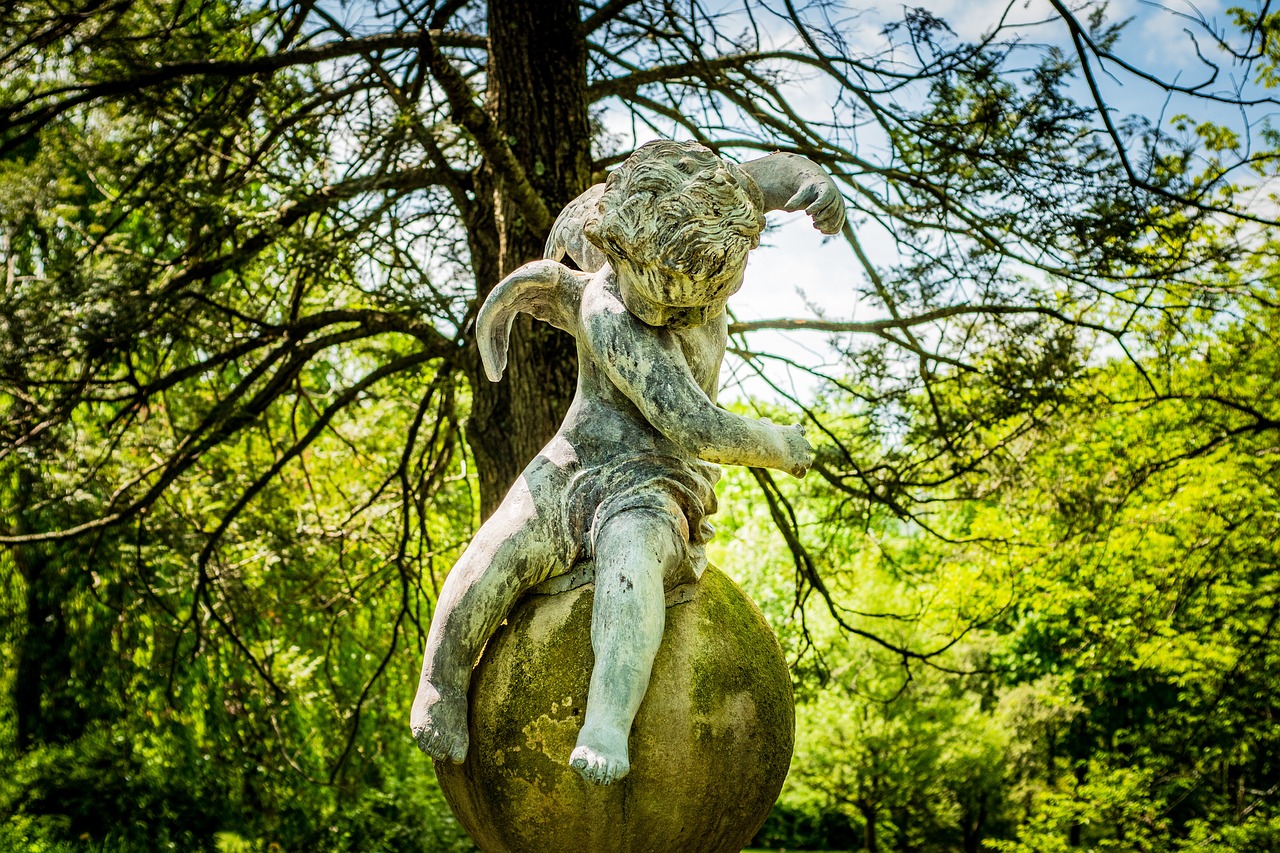Cupid, the mythical deity of romantic passion, possesses two distinct types of arrows: one with sharp, golden tips, stirring intense desire, and another with blunt, leaden tips, evoking repulsion.
In ancient Roman culture, sexual attraction was an accepted aspect of life, though it was seen as perilous if it overwhelmed one’s judgment. Cupid represents this tension, depicted as a small child brandishing deadly arrows in both classical narratives and Renaissance art.
The Pain of Love
In the exquisite piece “Apollo Pursuing Daphne” by Giovanni Battista Tiepolo, Cupid plays a pivotal role in a story from Ovid’s “Metamorphoses,” which has greatly influenced Western literature. The narrative recounts how Apollo slays the creature known as The Python with a barrage of arrows. From a safe vantage point, Cupid observes, equipped with his quiver.
When Apollo notices Cupid, he sarcastically remarks, questioning the boy’s use of such weaponry. Angered, Cupid retaliates; he strikes Apollo with a sharp arrow, kindling love for the nymph Daphne, while wounding Daphne with a blunt arrow, inciting her aversion towards Apollo.
Desperate to escape, Daphne turns to her father, a river god, for aid. In a bid to protect her from Apollo’s advances, Peneus transforms her into a laurel tree. Tiepolo captures this transformation at its pinnacle, as Daphne’s limbs shift into branches while Apollo, still yearning, attempts to express his affection, finding rejection even in her wooden form. Hiding in the shadows, Cupid evades the anger directed at him.
The Price of Temptation
In another notable artwork, Lucas Cranach the Elder’s “Cupid Complaining to Venus,” we see a reinterpretation of Cupid’s character. Covered in bees after pilfering honey, Cupid seeks guidance from his mother, Venus. Her response is a playful reminder of the pain that often accompanies such mischief.
Venus, adorned only with jewelry and a velvet hat, reaches for an apple, evoking the temptation found in the tale of Eve. The setting transitions from daylight to the soft pastels of sunset, enhancing the foreshadowing in the Latin inscription that warns of fleeting pleasures leading to heartache.
The Conclusion of Romance
Jeanne Antoinette Poisson, notable as Madame de Pompadour, was not just an influential figure in 18th-century France but also a patron of significant artworks. Her commission of François Boucher’s “The Bath of Venus” reflects her intimate connection with the era’s artistic expression. This painting, rich with motion and emotion, symbolizes Pompadour’s complex relationship with King Louis XV as it wanes from passionate to platonic, particularly following her health struggles.
In “The Bath of Venus,” Venus’s wistful demeanor suggests the bittersweet end of romance, correlating seamlessly with the decline of Pompadour’s courtship.
Rediscovered Secrets
Cupid lay hidden beneath layers of paint in Johannes Vermeer’s “Girl Reading a Letter at an Open Window” for over three centuries until a recent restoration revealed his presence. This meticulous unearthing has shed light not only on Vermeer’s technique but also the ambiguous nature of the letter being read—suggesting intrigue and hidden motives.
The painting’s composition positions a young girl at an open window, symbolizing her yearning for experience, while Cupid’s trample on a mask hints at the intertwining of love and deception—a common theme in romantic tales.
A Mythical Encounter
The challenges of explicating Titian’s “The Worship of Venus” reflect the complexity of love itself. Commissioned for the Duke of Ferrara, the painting is filled with dynamic figures and references to ancient texts, portraying a celebration of beauty and love. Interestingly, the absence of Venus, who may represent both the ideal and the unattainable, creates an aura of anticipation.
The narrative surrounding this artwork likely aligns with historical Roman rituals, illustrating women’s yearly petitions for beauty in hopes of attracting love. Ultimately, the idea that Venus is not participating in the modern spectacle of social media resonates profoundly—suggesting that true love transcends the fleeting approval of an audience.



